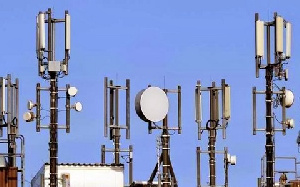Opinions of Monday, 25 February 2019
Columnist: Cozy
Tanzanian learnings in telecom monitoring
The ownership of the Telecommunication Traffic Monitoring System (TTMS) developed by Global Voice Group, which was operated jointly with Tanzania Communications Regulatory Authority (TCRA) since 2013, has been recently fully transferred to the TCRA. Let’s have a look backwards on its benefits over the past five years.
While the milestone of the first five years of operation of the TTMS was reached in late 2018, its progress report is very promising. By the end of 2013, when it was launched in Tanzania, this device had been described as “not only a revolution, but also one of the greatest achievements to the country’s communication sector”. Indeed, it allowed TCRA to stand out by making it the very first regulator in the world to use IT technologies to closely monitor the financial performance of the telecom industry. It then displayed the promise of allowing 28% of the international telecoms revenue to be paid to the government and thus gave the opportunity for the country to garner up to 20 billion Tanzanian shillings (8,6 million dollars) a year from the revenue share. Five years later, the balance is more than positive: between October 2013 and September 2018, 93 billion Tanzanian shillings (about 40 million dollars) were collected through the monitoring of incoming international calls. TCRA benefited from the clear improvement of the governance of a major sector for the socio-economic development of the country.
Four levers of action
These results were made possible thanks to a two-step deployment of the TTMS. In October 2013, the Interconnection Monitoring System (IMS) was launched. This real-time telecom metadata collection and processing platform for the billing and regulatory monitoring of domestic and international interconnection traffic allowed accurate and transparent billing of the surtax for incoming international calls thanks to reliable and comprehensive data collected on the volumes of international traffic handled operators. Since its launch, the system is also based on an automated platform to detect fraudulent lines and grey traffic (Telecop) bypassing licensed international gateways.
In 2015, the system was supplemented by a Mobile Money Monitoring System - a mobile money data collection and processing platform - allowing the regulator to monitor revenues generated by operators via mobile transactions. These data being shared with TCRA and Central Bank. The system allows a close regulation of the mobile money market – which is one of the most developed on the African continent with transactions representing more than 50% of the Tanzanian GDP - and ensures compliance with Tanzania's laws and regulations. Automatic Device Detection and Central Equipment Identity Registry, a centralized platform dedicated to monitor and fight against black and grey devices, lastly enriched the whole.
Shared benefits
The State is not the only beneficiary of this initiative. Local operators – with their per minute commission having increased from 0.08 to 0.13 cent in the meantime - also took advantage of it. Last but not least, traffic measurement and anti-fraud systems made networks more secure and eliminate fraudulent traffic for the good of Tanzanian consumers.
It also improved quality of service on international calls, since calls going through illegal routes are of poor quality due to the VoIP compression methods used by fraudsters. Moreover, with more secured networks and mobile money supervision dramatically reducing frauds, TTMS contributed to the development of small businesses, especially for women who have been induced to switch from subsistence farming to business or sales as their primary occupation as a result of safer mobile money access. Bright prospects for Ghana, which launched a similar system through Kelni GVG Common Monitoring Platform, last October.
Entertainment










